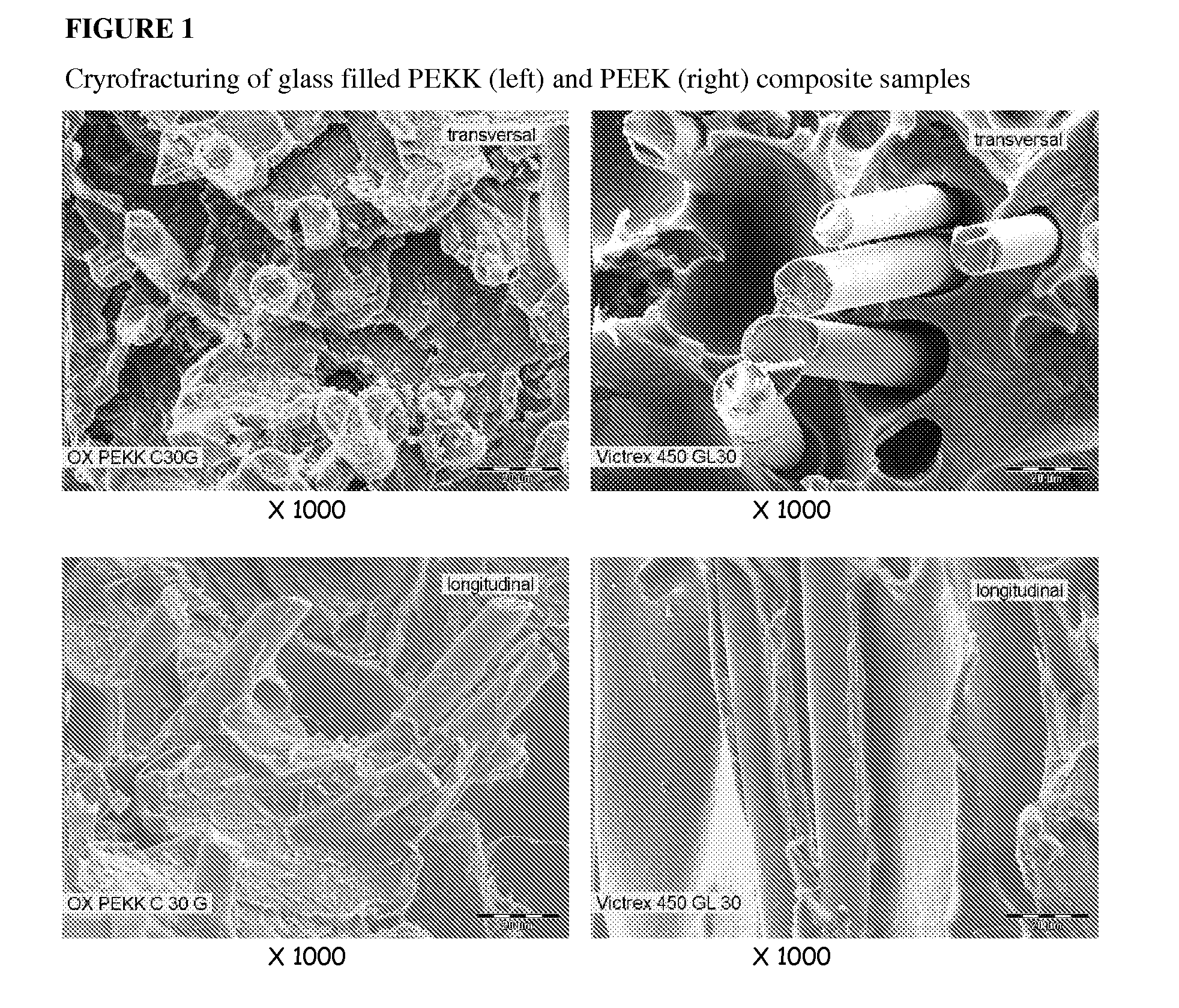Assemblies containing polyetherketoneketone tie layers
a polyetherketone and tie layer technology, applied in the field of amorphous polyetherketoneketones as tie layers in assemblies, can solve the problems of limiting the properties of such assemblies, difficult to achieve satisfactory adhesion or bonding directly between dissimilar layers, and inability to use a single material to fabricate a desired componen
- Summary
- Abstract
- Description
- Claims
- Application Information
AI Technical Summary
Benefits of technology
Problems solved by technology
Method used
Image
Examples
example 1
[0022]Production of PEKK film—A thin film of amorphous polyetherketoneketone A-PEKK (OXPEKK SP from Oxford Performance materials, T / 1 ratio of 60 / 40) was produced by melt processing pellets of A-PEKK on 1 inch Davis Standard extruder fitted with a 12 inch film die. The polymer was processed with a relatively low screw speed (20-80 RPM) and at 315-325° C. The extruder was fitted with a standard cast film take off stack from Davis standard operating at 150° C.
[0023]Films of crystalline grades, with T / I ratios of 70 / 30 or higher, are also possible but more difficult to produce. The rapid cooling and crystallization of these films requires higher extruder temperatures and melt temperatures (365-375° C.), and higher temperatures for the take off equipment (220-250° C. or higher).
example 2
[0024]Production and testing of laminated materials using PEKK as the tie layer—Test samples consisted of 1″ by 5″ metal or glass strips (see table 1) and 1″ by 1″ by 0.07″ sheets of PEKK formed by the process described in Example 1. The surfaces of the test samples were cleaned with acetone to remove any grease or oil prior to molding. The samples were compression molded using a Carver press and two 12-inch by 12-inch aluminum blocks with small 1″ by 5″ indentations to hold the test samples. The press mold was preheated to 220-230° C. (for A-PEKK sheets) or 260-290° C. for crystalline PEKK. After preheating the mold was removed from the press and the test sheets and 1″×1″ PEKK sheets carefully assembled into a 3 layer structure so as to not contaminate the bonding surfaces. The construction consisted of one PEKK sheet between two sheets of the appropriate tests materials. The mold was then reassembled and placed back in the press and reheated to the test temperature for c.a. 1 minu...
PUM
| Property | Measurement | Unit |
|---|---|---|
| Thickness | aaaaa | aaaaa |
| Pressure | aaaaa | aaaaa |
| Pressure | aaaaa | aaaaa |
Abstract
Description
Claims
Application Information
 Login to View More
Login to View More - R&D
- Intellectual Property
- Life Sciences
- Materials
- Tech Scout
- Unparalleled Data Quality
- Higher Quality Content
- 60% Fewer Hallucinations
Browse by: Latest US Patents, China's latest patents, Technical Efficacy Thesaurus, Application Domain, Technology Topic, Popular Technical Reports.
© 2025 PatSnap. All rights reserved.Legal|Privacy policy|Modern Slavery Act Transparency Statement|Sitemap|About US| Contact US: help@patsnap.com


